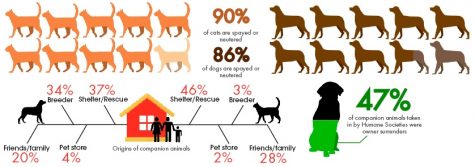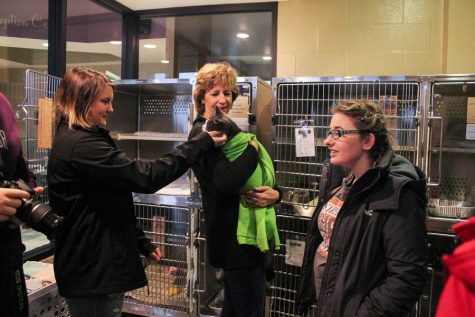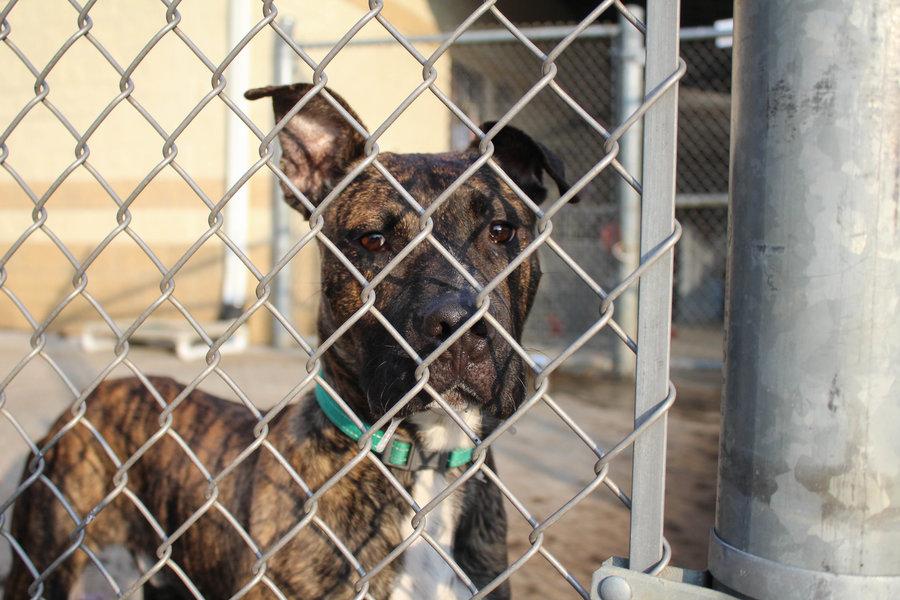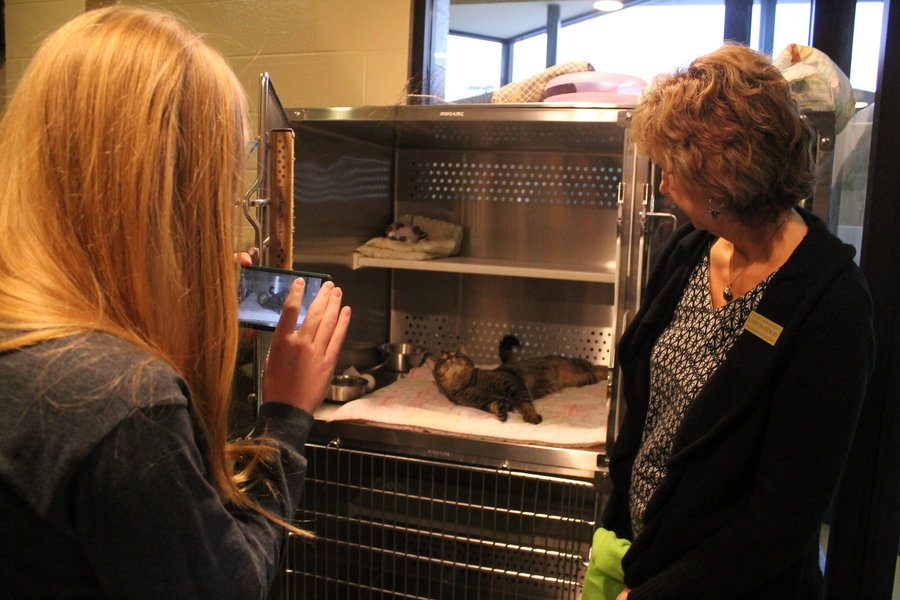Emptying the cages
How volunteering, spaying pets, neutering pets and adopting from shelters can help animals in need
January 24, 2017
The issue is not that there are animals in the cages, it is that there are animals waiting to fill their spots. Shelters like Cascades Humane Society, located in Jackson, Michigan, can only take in so many animals.
“Sometimes we do have to turn people away, because we
don’t have the room, but we try to take as many as we can,” marketing and volunteering coordinator for Cascades Lindy Inosencio said. “We try to do as much as we can for other shelters as well, when we have room. If they have a need, especially if they are not a no-kill shelter like we are. No-kill, so they stay here until they get a home. We just had two cats that went home in October that had been here since June last year.”
Each year, approximately 2.7 million shelter animals are adopted, according to the American Society for the Prevention of Cruelty to Animals. Matching that number, however, are the number of animals that are euthanized.
An action that can reduce that number is for animal owners to spay and neuter their pets.
Cats and dogs as young as eight weeks old can be fixed. A variety of locations offer those services and according to ASPCA, the cost of spaying or neutering a pet is less than the cost of raising puppies or kittens for a year in the long run. Created in Canva by Sarah Barney
Created in Canva by Sarah Barney
At Cascades Humane Society, animals are spayed and neutered as soon as they are brought in. The cost of those procedures is reflected in the cost of the animals that they adopt out.
“An adult cat is $55,” Inosencio said. “Which is very reasonable considering the money that we put into them.”
At humane societies like Cascades, volunteers are an essential aspect. Small staffs make it harder to care for all the animals housed.
“Sixteen staff members run this facility, so we very much count on our volunteers,” Inosencio said.
Most humane societies have applications available for those willing to volunteer. Applications ask about applicants previous experience with volunteering, availability for volunteering, why applicants are interested in applying and other basic information.
“We have paper applications or you can go to our website,” Inosencio said. “You can fill out an application on the website and it goes directly to me, and we sign them up for orientation. We always need help, especially on the weekends.”
Volunteers are able to help with jobs like dog walking, cleaning and cat socializing. Before being able to volunteer for some positions, training is required.
“Dogs react differently in shelter environments,” Inosencio said. “We do have a lot of safety protocol we need to follow.”
Volunteers must also be 16 years of age, although younger volunteers can come in with parents.
Even after being spayed or neutered and having volunteers to help take care of them, animals still need someone to adopt them into a forever home.

As part of the tour, junior Jillian Cadieux pets a cat while tour guide Lindy Inosencio holds it in her arms and fellow junior Lauren Morris stands nearby. Uncaged reporters were able to pet multiple cats during this portion of their tour at Cascades Humane Society in Jackson, Michigan.
Sophomore Andrew Zeigler and his family were able to give two Havanese dogs named Chance and Jo-Jo a home. They adopted them for $500 each from Halo Havanese Angel League Organization for Rescue, a group that rescues Havanese dogs from puppy mills by driving across the country to buy them from auctions.
“I think it’s best to rescue versus buy dogs because there are so many unwanted ones that need homes,” Zeigler said.
Before the dogs were adopted by the Zeiglers, they lived in a puppy mill, places that breed and stores dogs for selling in inhumane conditions.
“It makes me happy knowing that my family and I changed the course of our dogs’ lives,” Zeigler said. “Knowing that they are well-loved, as opposed to sitting in kennels stacked to the ceiling never having seen daylight, is a feeling you can’t get from just buying a dog.”
If prospective owners are sure they can care for a new addition to their home, the average adoption is a relatively simple process and only takes about 30 minutes. Getting a pet from a shelter or rescue is an option chosen by many who are looking for a new pet.
Some 37 percent of all dogs and 46 percent of all cats acquired by owners came from a shelter or rescue according to the Shelter Pet Project.
“It depends on the week, some days we have like a super duper day and then the next day it might be slow,” Inosencio said. “I can tell you this fiscal year we adopted 1,087 animals, this last fiscal year which runs from the end of June to the first of July. So, it very much depends on the week. Some weeks are slower and some weeks we just get slammed.”
Even for those who want to give an animal a home, finding the right match can be tricky for both the animal and the prospective owner. As a result, animals can spend a long time waiting for the right home.
“Dogs average about two weeks. Cats can be much longer because sometimes cats have a personality that has to match the person that walks in the door,” Insencio said. “Cats are more particular, I think, about who they go home with, but some of the dogs will be that way too. Someone will want to meet with them, and they’ll have absolutely no interest in that person and the person’s like, ‘okay, there’s no connection there, so can I see another dog?’ And, then the next person that comes in the door, they might be in their lap and giving them kisses because they’re like, ‘oh, you’re my person.’”


